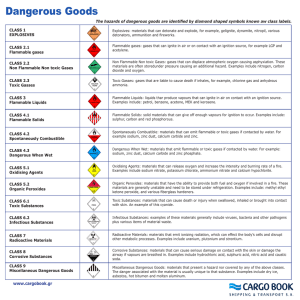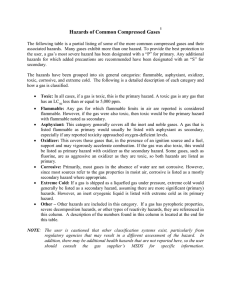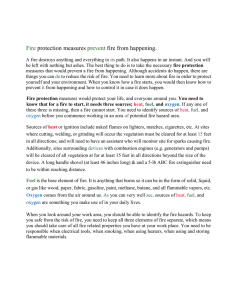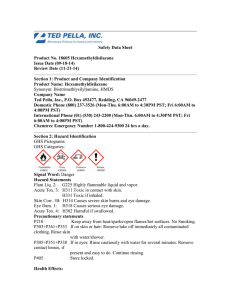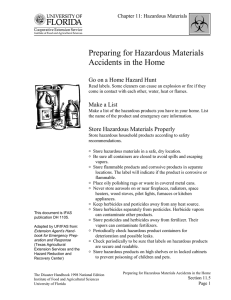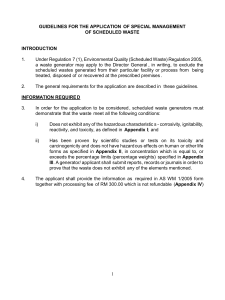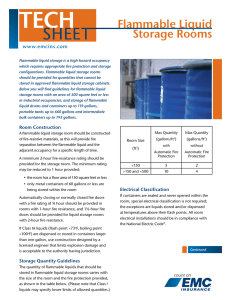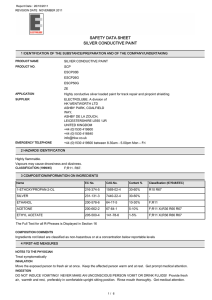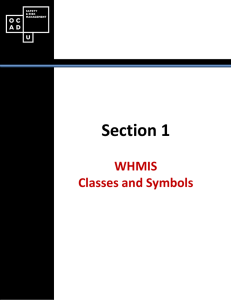Chemical Safety Slides
advertisement
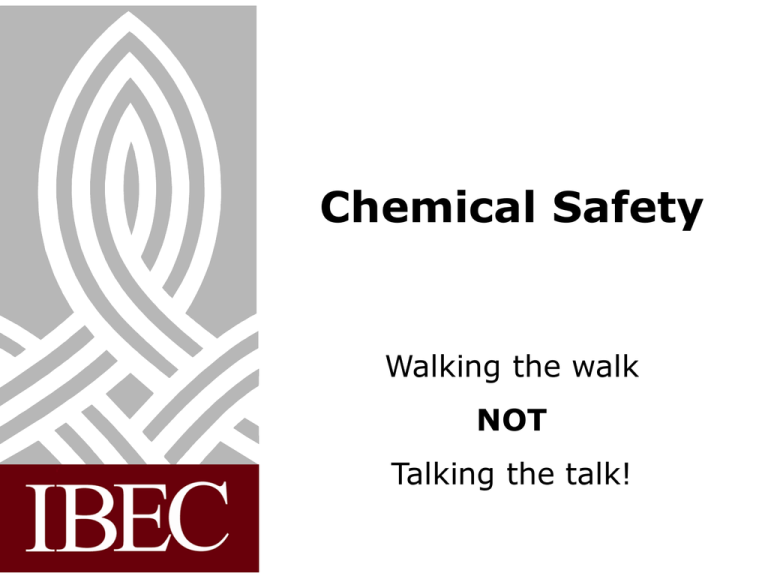
Chemical Safety Walking the walk NOT Talking the talk! Chemicals are a hazard Hazard: Potential to cause harm Risk: Likelihood that harm will arise Perception of risk is critical Risk depends on exposure Minimise EXPOSURE & reduce the RISK! Hazardous Substances Physico-chemical Hazards include flammable, explosive and oxidising Toxicological Hazards include toxic, carcinogenic, mutagenic, harmful, irritant, corrosive and sensitising Environmental Hazards Flash-Point The flammability of Liquids defined by its flash- point The lowest temperature at which a fuel- air mixture present above the surface of a liquid will ignite if an ignition source is introduced 21-55 0C ~ Flammable <21 0C ~ Highly flammable < 0 0C ~ Extremely flammable Toxic LD50 (oral) LD50 mg/kg (skin) mg/kg Very toxic <25 <50 (T+) Toxic (T) 25-200 50-400 LC50(inhal) mg/l(4hrs) Harmful (Xn) 2-20 200-2000 400-2000 <0.5 0.5-2 Adequate Risk Assessment Should be commensurate with the risk and complexity of the process Competent person Must take into account the substances, nature of the work, human variability and the nature and degree of exposure Chemical Risk Assessment Step 1: Collect the relevant information Step 2: Assess the risk Step 3: ID prevention and protective measures Step 4: Plan for an emergency Step 5: Audit and review Step 6: Communicate the RA Chemical safety Minimise EXPOSURE and reduce the RISK! Chemical reality I 30th January 2003 - Irish Independent 34 year old worker habitually exposed to excessive dust and fumes “Such a character and such concentration as to be likely injurious to his health” Contracted asthma €165000 plus costs against the company Chemical reality II Research laboratory – Spring 1988 Safe systems of work Solvent stills Water pressure ‘Pulling capillaries’ Presence of mind is good – absence of body is better! Chemical reality III 9th September 1993 Amino alcohol production Ester formation Thionyl chloride leak €16,000 per day



